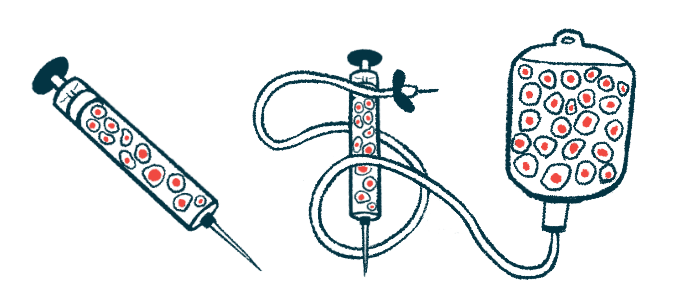Man develops acquired angioedema after cord blood transplant
Researchers: Corticosteroids should be used when conventional approaches fail

A man in Japan may have developed acquired angioedema as a late complication of graft-versus-host disease, which occurred when stem cells from a cord blood transplant he received to treat cancer turned against his own body, according to a recent report.
A diagnosis was made based on a blood test that checked the activity and levels of two complements proteins, C1 esterase inhibitor (C1-INH) and C4. The condition’s symptoms were controlled with prednisolone, a corticosteroid.
When acquired angioedema develops after a cord blood transplant, doctors should “consider corticosteroid therapy as part of the management strategy when conventional approaches are insufficient,” the researchers noted in “Acquired angioedema as a late-onset complication after cord blood transplantation: A subtype of chronic graft-versus-host disease,” which was published in QJM: An International Journal of Medicine.
Angioedema occurs when blood vessels leak fluid into the deeper layers of the skin or mucous membranes that line internal organs, resulting in swelling attacks that can arise anywhere in the body. In acquired angioedema, attacks happen when the body mistakes C1-INH as foreign and produces antibodies against it or when the complement cascade is activated by cancer or other illnesses and C1-INH is spent in an effort to regulate those abnormalities. The complement cascade is a protein network that’s part of the immune system.
An ‘unexpected’ complication
Here, researchers described the case of a 53-year-old man who developed acquired angioedema as an “unexpected” complication of a cord blood transplant to treat acute myeloid leukemia, a blood cancer.
The cancer went into complete remission after the transplant, meaning all signs of the leukemia had disappeared with treatment. Cord blood, which is blood that remains in a placenta and umbilical cord following a birth, is rich in blood-forming stem cells, which can be used to treat cancer and other diseases.
There were no signs of graft-versus-host disease, which occurs when transplanted cells attack the recipient’s body. Blood tests revealed the presence of polyclonal hypergammaglobulinemia, or too many antibodies being produced by immune cells, however.
Sixteen months later, the man had repeated episodes of abdominal pain and lip swelling, which “occurred once a week and resolved spontaneously within an hour.” A CT scan showed his small bowel was swollen.
Blood tests revealed both C1-INH activity and C4 levels were decreased, which is consistent with acquired angioedema. Genetic testing detected no mutations in the SERPING1 gene that provides instructions for producing C1-INH, which ruled out hereditary angioedema.
The man didn’t respond to an initial six-month treatment with tranexamic acid, which is sometimes used off-label for some types of angioedema, and methenolone acetate, a steroid. He continued to have severe swelling attacks, which occurred twice a month.
Consistent with first-line treatment for graft-versus-host disease, he received daily doses of prednisolone. As a result, he saw near-complete remission of his swelling attacks and, a month later, both C1-INH activity and C4 levels had returned to normal. The prednisolone was tapered.
“Treatment with prednisolone for [chronic graft-versus-host disease] led to symptom improvement,” the researchers wrote. “Hence, it is plausible that [acquired angioedema] caused by autoantibodies is associated with [chronic graft-versus-host disease].”







